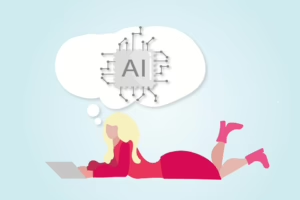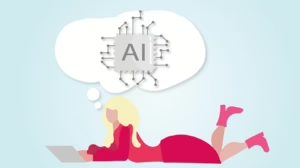Artificial Intelligence Demystified: Understanding Its Meaning and Implications
Introduction
Artificial Intelligence (AI) is one of the most transformative technologies of our time, influencing multiple facets of modern life, from healthcare and finance to entertainment and transportation. Despite its growing influence, many people still have misconceptions about what AI truly is and what it can or cannot do. This article aims to demystify AI by providing a comprehensive understanding of its meaning, types, applications, and the ethical and societal implications that accompany its deployment.
Defining Artificial Intelligence
At its core, artificial intelligence refers to the simulation of human intelligence in machines that are programmed to think, learn, and perform tasks typically associated with human cognitive functions. This encompasses a range of technologies, including machine learning, natural language processing, and robotics. The term was originally coined in 1955 by John McCarthy, one of the founding figures of AI research.
Types of AI
AI can broadly be classified into two main categories: Narrow AI and General AI.
-
Narrow AI: Also referred to as Weak AI, this type is designed to perform specific tasks. Examples include virtual assistants like Apple’s Siri, recommendation algorithms on Netflix, and customer service chatbots. Narrow AI excels in its designated function but lacks the ability to generalize knowledge across different domains.
-
General AI: Known as Strong AI, General AI refers to a hypothetical capability of machines to perform any intellectual task that a human can do. This kind of AI would have the ability to understand, learn, and apply knowledge in a generalized manner, resembling human-like cognition. As of now, General AI remains largely theoretical and is the subject of ongoing research and debate.
The Mechanics of AI
Machine Learning
One of the most crucial components of AI is machine learning (ML), a subset of AI that enables systems to learn from data and improve their performance over time without being explicitly programmed. ML can be categorized into three primary types:
-
Supervised Learning: This involves training algorithms on labeled datasets, allowing the model to learn the relationship between inputs and outputs. For example, a supervised learning model can be trained to recognize images of cats and dogs based on a dataset that includes images labeled as “cat” or “dog”.
-
Unsupervised Learning: Unlike supervised learning, unsupervised learning works with unlabeled data. The algorithm tries to find hidden patterns or intrinsic structures within the input data. Clustering algorithms and association algorithms are examples of unsupervised learning techniques.
-
Reinforcement Learning: In this type, an agent learns by interacting with its environment, receiving feedback in the form of rewards or penalties. Reinforcement learning has been successfully applied in fields like robotics and game playing, such as AlphaGo’s victory over human champions at the game of Go.
Natural Language Processing
Natural Language Processing (NLP) is another vital aspect of AI that focuses on the interaction between computers and humans through natural language. It involves several sub-tasks such as speech recognition, language translation, and sentiment analysis. NLP models have become significantly advanced, allowing for better human-computer interaction, like chatbots capable of holding a conversation.
Robotics
Robotics integrates AI technologies to build machines that can perform tasks in the real world. Robots equipped with AI can navigate complex environments, interact with humans, and make decisions based on sensory input. Examples include autonomous vehicles like Tesla’s self-driving cars and industrial robots used in manufacturing.
Applications of AI
The applications of AI are vast and continually expanding. Below are several noteworthy domains where AI is making significant contributions:
Healthcare
AI is revolutionizing healthcare by enhancing diagnostic accuracy, personalizing treatment plans, and improving patient outcomes. For instance, AI algorithms can analyze medical images to identify diseases like cancer with remarkable accuracy, sometimes surpassing human doctors.
Finance
In the financial sector, AI is used for fraud detection, algorithmic trading, and credit scoring. AI systems can analyze vast amounts of transactional data in real-time, identifying unusual patterns that might indicate fraud. Additionally, robo-advisors utilize AI to provide personalized investment advice to clients.
Transportation
AI is the backbone of autonomous vehicles, enabling cars to navigate roads, interpret traffic signals, and make decisions. Companies like Waymo and Tesla are heavily investing in AI to develop self-driving technologies that promise to reduce accidents and traffic congestion.
Education
In education, AI-powered tools offer personalized learning experiences for students. Adaptive learning platforms use AI to tailor educational content to individual learning paces and styles, providing a more effective approach to education.
Entertainment
AI is transforming the entertainment industry, particularly in content creation and recommendation systems. Streaming services like Netflix use machine learning algorithms to analyze user behavior and suggest content tailored to individual preferences.
Ethical and Societal Implications
As AI technology continues to evolve, it brings with it a host of ethical and societal challenges. Understanding these implications is crucial as we navigate the future of AI.
Job Displacement
One of the most significant concerns surrounding AI is the potential for job displacement. Automation of low-skilled jobs can lead to unemployment and economic inequality. As AI technologies continue to automate tasks that were once performed by humans, it becomes critical to address the social and economic repercussions.
Privacy Concerns
The data-driven nature of AI raises serious privacy concerns. With AI systems collecting vast amounts of personal data for machine learning, the risk of data breaches and misuse of information is heightened. Striking a balance between technological advancement and individual privacy is vital for ensuring public trust in AI systems.
Bias and Fairness
AI systems are not immune to biases present in the data they are trained on. If the data reflects societal biases, the outcomes can perpetuate discrimination. For instance, biased algorithms in hiring processes may disadvantage certain demographic groups, highlighting the need for fairness and accountability in AI development.
Accountability and Transparency
As AI systems become increasingly autonomous, questions of accountability arise. In the event of failures or unethical behavior, determining who is responsible can be complex. Establishing clear guidelines for accountability and enhancing the transparency of AI algorithms will be crucial in addressing these challenges.
The Future of AI
The trajectory of AI development suggests a promising yet cautious future. Continued research and investment will likely lead to more advanced and capable systems. However, the societal implications accompanying this growth necessitate ongoing dialogue between technologists, ethicists, and policymakers.
Collaborative AI
One emerging trend is the concept of Collaborative AI, where human and machine work together. Instead of replacing humans, AI can augment human capabilities, allowing for more efficient decision-making and creativity. This collaborative model can lead to innovative solutions across various sectors.
Regulation and Governance
As AI technology evolves, the need for regulation and governance becomes more pressing. Policymakers must engage proactively with technologists to develop frameworks that ensure ethical AI deployment while fostering innovation. Stakeholders must collectively define standards and best practices to govern AI development responsibly.
Continuous Learning
The future of AI also involves continuous learning and adaptability. AI systems will increasingly require mechanisms to update their algorithms and learn from new data dynamically. This capacity for continuous improvement will be essential for maintaining relevance and efficacy as circumstances change.
Conclusion
Artificial Intelligence stands at the forefront of technological advancement, promising to reshape various aspects of our daily lives. Understanding its meaning, applications, and implications is essential for harnessing its potential while mitigating risks. As society navigates this evolving landscape, a collaborative approach that includes ethical considerations, transparency, and regulatory frameworks will be key to ensuring that AI serves humanity and fosters a better future.
References
- Russell, S., & Norvig, P. (2020). Artificial Intelligence: A Modern Approach. Pearson.
- Goodfellow, I., Bengio, Y., & Courville, A. (2016). Deep Learning. MIT Press.
- Chui, M., Manyika, J., & Miremadi, M. (2016). Where machines could replace humans—and where they can’t (yet). McKinsey Quarterly.
- Brynjolfsson, E., & McAfee, A. (2014). The Second Machine Age. W.W. Norton & Company.
- Binns, R. (2018). “Fairness in AI: A Machine Learning Perspective.” Proceedings of the 27th International Joint Conference on Artificial Intelligence.
- Dignum, V. (2018). “Responsible Artificial Intelligence: Designing AI for Human Values.” Proceedings of the AAAI Conference on Artificial Intelligence.


























Add Comment